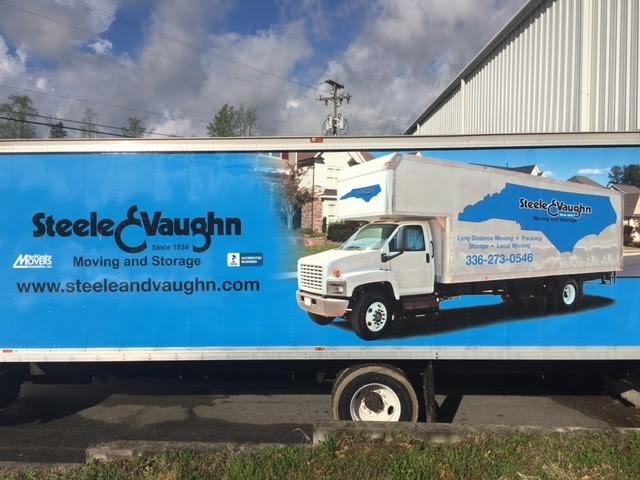Packing Materials
Use only strong, corrugated cartons with covers. We can supply you with specially made cartons, for everything from mattresses to clothing and mirrors. The added protection of mover-provided cartons may avoid damage that results from the use of poor-quality packing materials.
Keep this in mind when getting boxes from food stores. Here’s a list a packing supplies that will come in handy:
- Plastic bags and labels for easy identification.
- Foam peanuts, Styrofoam pellets or “popcorn.”
- Tissue or craft paper for delicate packing jobs.
- Corrugated paper rolls for figurines and fragile items.
- Gummed tape (1 1/2 to 2 inches wide) and/or strong twine for sealing cartons.
- Markers and labels for identifying contents of cartons.
- Notebook and pencil for carton identification log.
Packing Pointers
Before actually packing-up, you need to have a game plan. For example:
- Pack one room at a time. This will help you when it comes time to unpack.
- Pack a couple of cartons a day, starting well ahead of the move.
- Mark all boxes, designating room and box number. Make a carton identification log to show the number of boxes packed per room, and the total number of cartons packed. It’s a good idea to leave space in your log for a special comments section to note carton conditions or location of high value goods. Notify your mover of any high value items.
- Be sure to have plenty of “filling” material available.
- Be sure that the bottoms of all cartons are secured and will hold the weight of the contents.
- Packing tape or gummed tape is better than masking tape.
- Pack heavier items toward the bottom of the box and lighter items toward the top. Try to keep a per-box weight of 50 pounds or less; it makes moving a lot easier. A general rule to remember on carton size — the heavier the item, the smaller the carton.
- Select a medium-sized carton (or mover provided dishpack) and line the bottom of the carton with crumpled packing paper.
Packing Dish-ware
- With packing paper stacked neatly in place on a work table, center one plate on the paper.
- Grasp a corner on several sheets of packing paper and pull the paper over the plate until sheets completely cover the plate. Stack a second plate on and, moving clockwise, grasp a second corner and pull sheets over the second plate.
- Stack a third plate. Grasp remaining two corners, folding two sheets of each corner (one at a time) over the plate.
- Turn your wrapped stack of plates upside down onto your packing paper.
- Re-wrap the entire bundle: start with one corner of packing paper and pull two sheets over the bundle, cover bundle with next corner, then the third corner; and finally, the fourth.
- Seal the bundle with packing tape.
- Place the bundle of dish-ware in a medium-size box so that the plates are standing on edge
- Use this process on all saucers, bread and butter dishes, and other dishware. When packing smaller dishes, you may choose to stack in greater quantity.
Packing Glasses and Stemware
- Stuff glasses and stemware with crumpled tissue or packing paper before wrapping.
- Lay on the corner of packing paper and roll it one or two full rotations (depending on size); pull sides of packing paper up and over glass/stemware and continue rolling to the far corner. Corrugated paper rolls or cellular boxes may be used for added protection.
- Place glasses and stemware toward the top of your box. Heavier items (dish-ware, pitchers, etc.) should be placed toward the bottom of the box.
- Delicate glassware and stemware should be placed in an upright position, not on its side.
- No matter what you’re packing, you should use crumpled packing paper in between each layer to assure a snug fit wherever there’s a gap. All boxes with “fragile” items should be marked accordingly.
Cars and Motorcycles
Cars and motorcycles shipped on the moving van should be drained nearly empty of fuel. Motorcycle batteries should be disconnected. Automobile antifreeze should be ample to protect against severe cold in winter.
Barbecue Grills and Propane Tanks
Wrap grates and briquettes separately in a newspaper (or place all briquettes into a grocery bag) and place parts in carton. Pad carton with paper to reduce movement of contents. Propane tanks cannot be put onto the moving van even if they have been purged professionally.
For Your Protection
The mover cannot be held responsible for items left at the residence after loading. It is your responsibility to make sure that nothing is left behind. Please make sure that you check your closets, cabinets, drawers, attics, basement, garage, and outside areas before the driver leaves origin.
* Do not ship bank bills, coins or currency, securities, deeds, notes, drafts, valuable papers of any kind, jewelry, postage or revenue stamps, stamp collections, precious stones, or precious metals. These items are not covered by any insurance option.
* The only items to be left in any drawers or furniture are clothing. No loose items such as pens, pencils, books, jewelry, cosmetics, etc.
It is the responsibility of the shipper at the time of loading and delivery to acknowledge in writing on the Bill of Lading and/or the “Household Goods Inventory” any property damage to residence at origin or destination. Otherwise, Steele & Vaughn will not be responsible for any damages.


